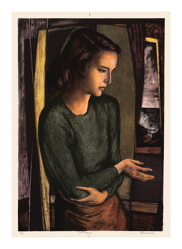Soliloquy
Origin
Late Latin soliloquium, from Latin solus alone + loqui to speak 1619
Definitions
- 1 : the act of talking to oneself
- 2: a dramatic monologue that represents a series of unspoken reflections
Description
A soliloquy (from Latin: "talking by oneself") is a device often used in drama when a character speaks to himself or herself, relating thoughts and feelings, thereby also sharing them with the audience. Other characters, however, are not aware of what is being said. A soliloquy is distinct from a monologue or an aside: a monologue is a speech where one character addresses other characters; an aside is a (usually short) comment by one character towards the audience. Soliloquies were frequently used in dramas but went out of fashion when drama shifted towards realism in the late 18th century. Today, Korean screenwriters often insert brief soliloquies in Korean drama. Queen In-Hyun's Man is a good example.
The plays of William Shakespeare feature many soliloquies, the most famous being the "To be or not to be" speech in Hamlet. In Richard III and Othello, the respective villains use soliloquies to entrap the audience as they do the characters on stage. Macbeth's "Tomorrow and tomorrow and tomorrow" speech and Juliet's "O Romeo, Romeo, wherefore art thou Romeo?" are other famous examples of Shakespearean soliloquies. (Juliet's speech is overheard by Romeo, but because she believes herself to be alone, her speech is still considered a soliloquy.) There are also a few in Macbeth "is this a dagger I see before me?" is one of the many.
